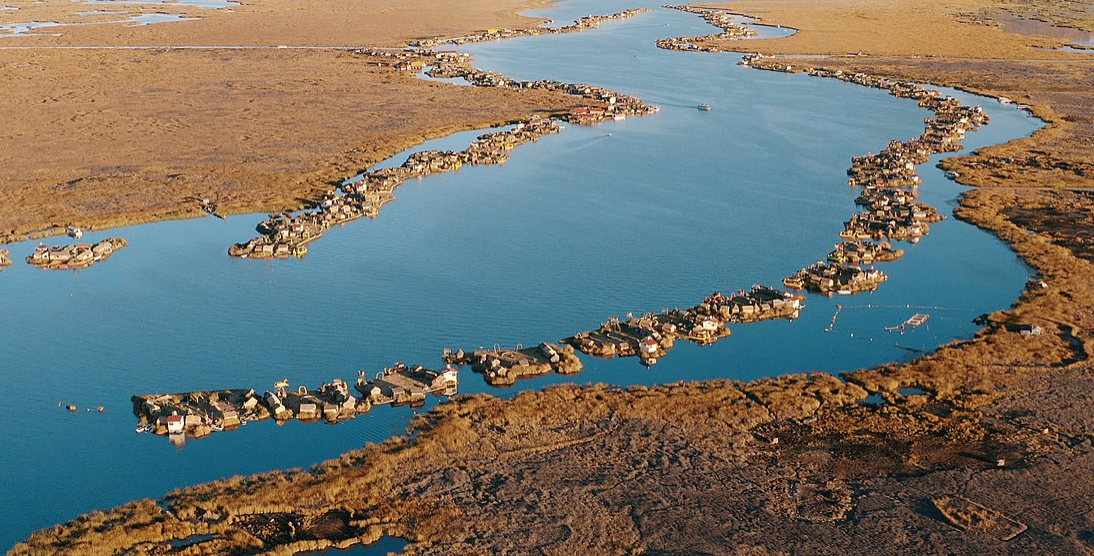In the year 2000, I journeyed to the borders of Bolivia and Peru. I spent a short time with the Aymara people. I visited lake Tititaca, where the Uru people - who merged with Aymara a few hundred years ago, before being conquered by the Inca, who were conquered by the Spanish - still live on reed islands in the lake and sail in reed boats, although mostly supported by tourism nowadays.
They have semi-domesticted a few unusual seeming animals. Guinea pigs live semi-wild and are then eaten. I ate quite a lot of guinea pig. (Tasty). I believe, they also keep fishing birds - Comorants, which they used to do in parts of China as well.
Fishing using comorants in China, source Guardian here: https://www.theguardian.com/world/gallery/2016/apr/06/dying-art-of-chinese-cormorant-fishing-in-pictures
Andy Beales / Barcroft Media
The Aymara language - still spoken by 2 million odd people - seems to reveal an interesting feature of the Aymara people. That is they view time flowing backwards, whereas most people view time flowing forwards.
“…with staggering monotony, they all resort to the same metaphor: space. If an English speaker says: "We are approaching the deadline," he or she is expressing imminence in terms of nearness, a property of physical space. Anyone listening will understand exactly what he or she means, even though the deadline is not an entity that exists in the physical world. Núñez says: "There is no ultimate truth that you could discover that is outside that metaphor."
So if temporal landmarks don't exist except in our heads, where does our notion of time come from? And why do we feel so strongly a sense of time as motion? In all Indo-European languages including English, but also in languages as diverse as Hebrew, Polynesian, Japanese and Bantu, speakers face the future. Time flows from a point in front of them, through their current position - the present - and back to the past. The Aymara also feel time as motion, but for them, speakers face the past and have their backs to the future.
The Aymara word for past is transcribed as nayra , which literally means eye, sight or front. The word for future is q"ipa , which translates as behind or the back. The Jesuits undoubtedly noticed this oddity in the 16th century, when they ventured up into the mountains to spread the word. More recently, linguistic anthropologists have puzzled over what it means. …”
This seems further emphasised by how they use gestures when speaking of time. Most people think of the future in a forward time flow with forward gestures. The Aymara view this the other way.
Articles on this here (guardian) (quotes from the article) and here (science daily).
More on travel? Read about when I visited one of the most remote place on earth, the Wana tribe in Indonesia.


